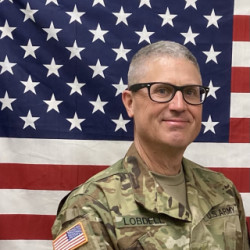We gather in Toronto to be inspired, to learn, and to welcome the new President of the American Association for Thoracic Surgery (AATS), Lars Svensson, MD PhD, from the Cleveland Clinic. It also appears that a few colleagues sneak off to watch the Leafs battle in the Stanley Cup playoffs, while others prefer watching the Blue Jays. It is all exciting!
That said, the promise of artificial intelligence, coupled with burgeoning data sets, to transform the world is confounded by myriad bottlenecks impeding the translation of innovation to clinical practice. Despite the disturbing perspective that “the answer is 17 years, what’s the question,” I remain focused on how to accelerate institutional and team learning, lead change, and improve faster.
Most noteworthy was the interdisciplinary session, ERAS for Cardiac Surgery: Next Steps in Perioperative Management, where we heard about the recently published expert consensus statement (ECS) and “turnkey orders.” Since the 2019 ERAS-Cardiac (ERASC) guidelines were published, the ERAS efforts have supported improvement initiatives through their pragmatic emphasis on implementation. It is astonishing to note that Altmetric has tracked 25,845,749 research outputs, and the 2019 ERASC guidelines are “in the 99th percentile.”
During this ERASC session, Michael Grant, MD, the lead author on the ECS from Johns Hopkins Medical Institutions, presented an overview of hemodynamic monitoring technologies based on his recent review of the subject. Broadly speaking, new and less invasive monitoring technologies aim to improve goal-directed therapeutic efforts. Pulse contour analysis and transesophageal echocardiography (TEE) are gaining popularity, while evidence suggests that pulmonary artery catheters (PACs) may be utilized more selectively.
V. Seenu Reddy, MD, from Nashville, shared his multi-institutional experience with artificial intelligence-guided hemodynamic management and how intensive care unit stays may be shortened with the employment of the technology.
Subsequently, Rawn Salenger MD (one of the AATS’s new members) shared a perspective, from his recent publication and personal experience, on the role of minimally invasive techniques in enhancing recovery. Marc Gerdisch, MD, reinforced the promise of enhancing recovery with his leading and extensive experience with minimally invasive mitral valve procedures in Indianapolis.
I had the pleasure of contributing to this ERASC session, also aided by a recent review of temporary mechanical circulatory support (tMCS) and related to the growing evidence suggesting the value of preemptive use, as opposed to merely rescuing patients with tMCS. Central to this thesis of proactive, goal-directed hemodynamic support is the value of microaxial flow devices to simultaneously unload the ailing heart during its most vulnerable times. Thereafter, Rakesh Arora, MD PhD, from the University Hospitals in Cleveland, reinforced the importance of integrating enhanced recovery principles, such as early liberation from mechanical ventilatory support and mobilization, in the tMCS patient.
In summary, we live in a most exciting and dynamic time while we simultaneously struggle to capitalize on the promise of exponential technologies due to fundamental challenges such as human biases, reluctance to change, and a lack of generally accepted comprehensive value analysis methods. It is not difficult to imagine a day when we do not make broad generalizations like, “TEE saves lives,'' or “PACs are associated with longer length of intensive care unit stays and more volume administration.” We instead look at the data the technologies generate and how the data may be utilized to optimize the quality and value of clinical care.
Hence, the path forward includes seamless management of high-quality data from disparate and novel sources, with short turnaround times for analysis, decision-making, and reporting. This path will improve risk models, coincide with smart clinical alarms, and fuel artificial intelligence. We will also improve the management of our patients with refined activity-based staffing, prioritization of work, etc. I believe that the convergence of these technologies will assist in significantly bending the health care cost curve, revolutionizing clinical research, and redefining the scientific method.
Finally, I will leave Toronto optimistic and inspired, as well as grateful to the wonderful people who contributed to the magnificent experience and rich opportunity to learn. Thank you!
Dr. Lobdell has no conflicts of interest to report.
Image by Alphavector / Shutterstock







